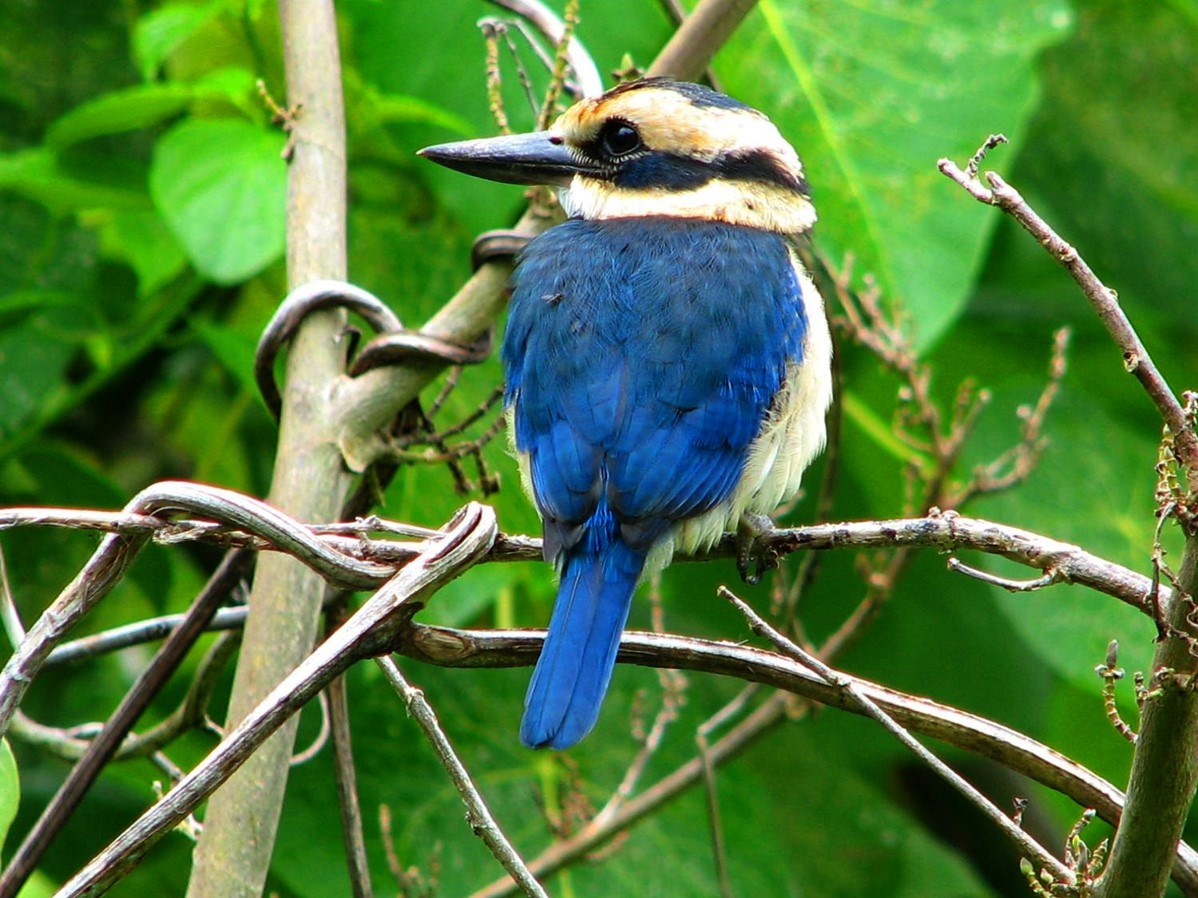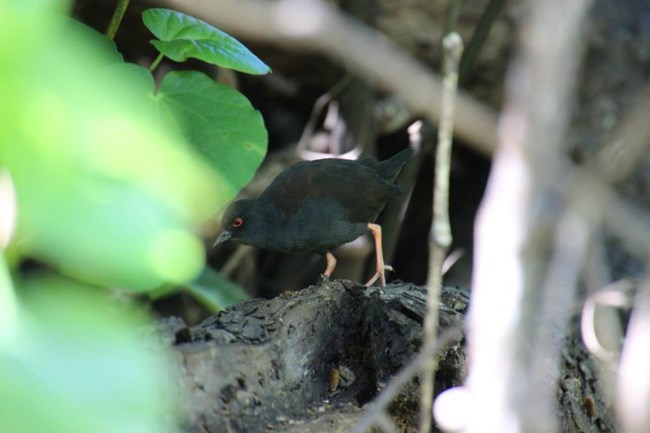Last updated: March 10, 2021
Article
Rare Species Detected During Forest Bird Surveys in the National Park of American Samoa

NPS
In 2011, Pacific Island Inventory & Monitoring Network (PACN) biologists did their first landbird survey in the National Park of American Samoa. They counted 2,516 birds from 13 species in the Tutuila and Ta‘ū park units. The most common species were doing well relative to other teams’ earlier surveys. But they didn’t find any of the region’s shy and cryptic spotless crakes, which have only been seen in Samoa a handful of times over the last 30 years. They also found very few many-colored fruit doves, a species of concern in the park.
In 2018, PACN biologists repeated their 2011 surveys. This time, in between counting stations, they found...spotless crakes! Though biologists didn’t see the dark-colored, flightless birds among the dense, montane scrub, they were thrilled to hear their unique calls. Spotless crakes were thought to be extirpated from American Samoa for 60 years before they were rediscovered on Ta‘ū in the 1980s. Biologists remain concerned about the species’ low numbers, but encouraged to find that they are persisting.

© Alex Fergus / Photo 2599580 / iNaturalist.nz / 2015-03 / CC BY-NC (http://creativecommons.org/licenses/by-nc/4.0/)
Biologists also found a few more many-colored fruit doves than they had previously, though the birds still appeared to be very rare. They have demonstrated a slow recovery in the park after frequent episodic hurricanes. It may be that the species’ strong preference for fig trees makes them especially vulnerable to storms that strip those trees of their fruits and leaves. And if the doves movements are related to the figs’ patchy distribution and fruiting cycles, getting a real sense of their population status may require a different kind of survey, and perhaps some banding and tracking.
All told, biologists detected 1,766 birds of 14 species in 2018. They observed seven species in high enough numbers during point counts to estimate their density and abundance. Polynesian wattled honeyeaters were the most abundant species. They and the Samoan starling were the only species that biologists recorded at every counting station in both park units. Polynesian starlings and blue-crowned lorikeets (Ta‘ū unit only) were also somewhat abundant. Pacific kingfishers, Pacific imperial pigeons, and crimson-crowned fruit doves were less so. For almost every species, biologists’ density estimates were slightly lower in 2018 than in 2011. For Samoan starlings in the Tutuila unit and blue-crowned lorikeets in the Ta‘ū unit, their estimates were significantly lower. They speculate that Tropical Cyclone Gita, which struck just four months before surveys began, may have played a role.
National Park of American Samoa conserves some of the best examples of tropical rainforest in the South Pacific, and the only paleotropical rainforest in the US national park system. Needless to say, its diverse array of bird life is extraordinary. Some species may even be more unique that we know, isolated as they are from other South Pacific islands. Furthermore, many pollinate plants or disperse seeds. They play vital roles in sustaining the rich vegetation communities that sustain them and so many other species. Yet many Samoan birds have been negatively affected by agriculture, hunting, logging, development, invasive species, and natural disasters. Repeated surveys allow park managers to take informed action to help conserve bird populations. Biologists hope to encounter more spotless crakes on their next round!
For more information
- Judge SW, Camp RJ, Vaivai V, Hart PJ. 2021. Population density, distribution, and trends of landbirds in the National Park of American Samoa, Ta‘ū and Tutuila units (2011–2018). Natural Resource Report. NPS/PACN/NRR—2021/2222. National Park Service. Fort Collins, Colorado. https://doi.org/10.36967/nrr-2284409
- Pacific Island Inventory & Monitoring Network: Landbird Monitoring
